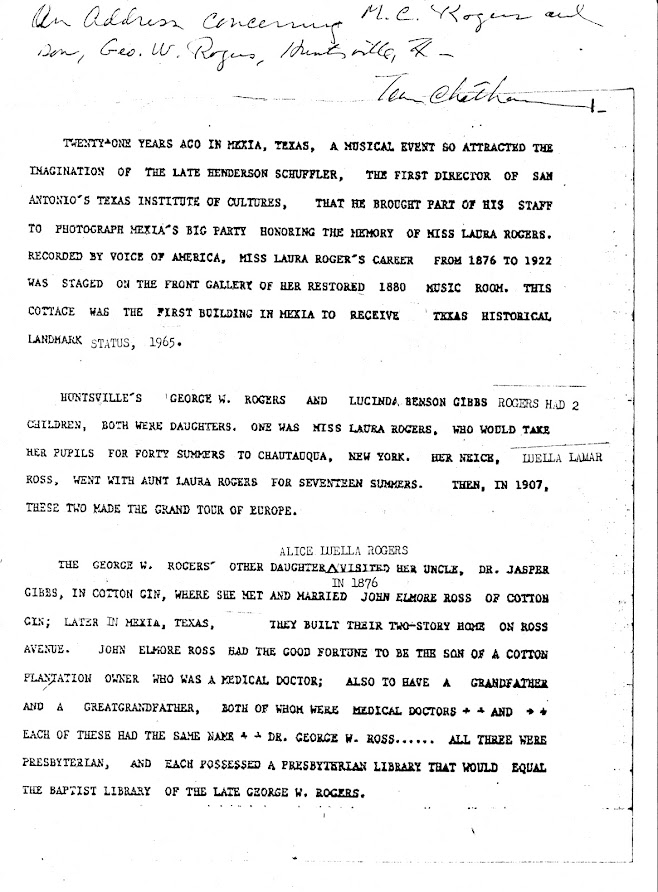I just was given an excellent link that helped explain how my mother had been involved in a Texas high school group wearing swastikas on their uniforms. I've updated this post to remove the German American Bund quote, and added fellow blogge, Mike Brubaker's information instead. Thanks Mike! His earlier comment is at the bottom of the post.
--------------------------------------
Here're my photos from my post which shows 1933-34 Texas high school extra-curricular activities from their yearbooks. One photo with cut edges was in my mother's photo album..
-------------------------------------
Edited from - Thursday, October 23, 2014
More uniforms
By 1933 my father had met my mother probably, in Jefferson High School in San Antonio, TX. She signed her name (Mataley Munhall) by her picture below, the right column at the bottom of portraits. Is she in Company C's group picture? Yes, front and center (well, to the right of the tall young man in the very center.)
I don't think my father (George Rogers) was in Company C until 1934. Then he was listed among the members, but I can't find him in the crowd (photo below). But where is my mother in 1934?
Mataley went to the newly formed Company D in 1934...and she was then listed as a sponsor. I think George missed his chance, (that time) since she changed her marching company. Incidentally, like many yearbooks, the group picture below does not have my mother located in the place that is indicated by her name. She is actually the girl in the middle of the front row, with her eyes closed. I know you were wondering about that!
When I remember Hitler's youth troops, it is even possible that his influence came into south Texas through the German connection. These high school students certainly appeared to have enjoyed wearing uniforms. Here's another post about The Girls who liked to March. And another one with similar photos HERE.
Yes the club was made of young women who met "as a social aid to the Battalion"...and were called the Swastika Club. I'm sure the young women stopped using that insignia in the early 40s.
I have often wondered how her grandfather being German American would have influenced her. And of course many other German immigrants lived in the San Antonio area.
That is a troubling history to unravel, Barb. Before the Nazis party took over the swastika, it had long been a symbol for many cultures, including Native-Americans in the southwest. In the 1920s and 30s when American high schools began developing school identities with sports teams, clubs, bands, mascots, uniforms. etc. it would not be surprising if a school in Texas might use an ancient Indian symbol. However I don't think Jefferson High borrowed a tradition from the Indians or bought into a relatively new German fascist movement either. Instead, I think the "Swastika Club" your mother and father joined was part of the Y.W.C.A (Young Women’s Christian Association)!
I found several references for this. Here is another blogger writing about a Swastika Club in Ohio.
< https://mcdlgenealogyspot.blogspot.com/2018/11/when-being-member-of-swastika-club-was.html >
And Wikimedia has this image of girls from the same Jefferson High year book that identifies their club as part of the Y. W. C. A.
< https://commons.wikimedia.org/wiki/File:Portrait_photos_of_school_girl_students_in_military-style_uniform,_cape,_dolman,_side_cap_with_swastika_symbol._YWCA_Swastika_Club._1935_yearbook_for_Jefferson_High_School_in_San_Antonio_Texas,_US._Low_resolution_image.jpg >
Under the long Wikipedia entry for "Western use of the swastika in the early 20th century" there is a section "Use by non-political clubs and organizations" that says "The Ladies' Home Journal sponsored a Girl's Club with swastika membership pins, swastika-decorated handkerchief and a magazine titled "The Swastika". Their version of the symbol was square with right facing arms. The club was formed at the beginning of the 20th century to encourage young women to sell magazine subscriptions."
When I looked up "Swastika Club" in Newspapers.com from 1930 to 1939 there were nearly 11,000 citations in newspapers all across the US. Another archive brought up nearly 700 hits for just Texas. Most of these Swastika Clubs seemed to be for women and several were in high schools. The reports were mainly notices about organizing bridge games, dances, benefits, or other innocent activities. They all used the swastika without any reference to Germany or the Nazi party. Despite what it looks like, I don't think the Jefferson High swastika club was promoting German nationalism or a fascist movement. I think it was just dressing up in a uniform style that would soon prove to be very politically incorrect.






















.jpg)










